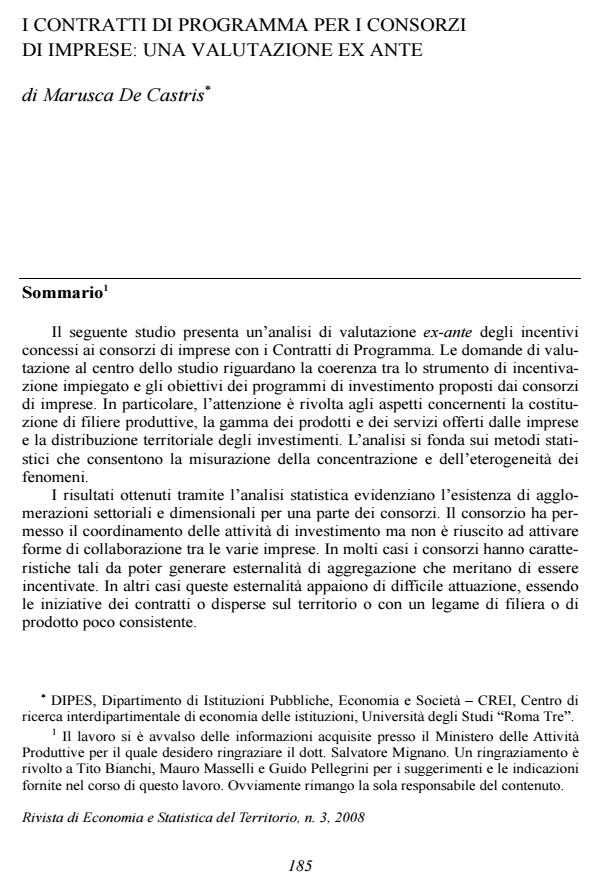I Contratti di programma per i consorzi di imprese: una valutazione ex-ante
Titolo Rivista RIVISTA DI ECONOMIA E STATISTICA DEL TERRITORIO
Autori/Curatori Marusca De Castris
Anno di pubblicazione 2009 Fascicolo 2008/3 Lingua Italiano
Numero pagine 22 P. 185-206 Dimensione file 215 KB
DOI
Il DOI è il codice a barre della proprietà intellettuale: per saperne di più
clicca qui
Qui sotto puoi vedere in anteprima la prima pagina di questo articolo.
Se questo articolo ti interessa, lo puoi acquistare (e scaricare in formato pdf) seguendo le facili indicazioni per acquistare il download credit. Acquista Download Credits per scaricare questo Articolo in formato PDF

FrancoAngeli è membro della Publishers International Linking Association, Inc (PILA)associazione indipendente e non profit per facilitare (attraverso i servizi tecnologici implementati da CrossRef.org) l’accesso degli studiosi ai contenuti digitali nelle pubblicazioni professionali e scientifiche
Incentives to Invest for Consortia of Firms: an ex-ante - Evaluation of Contratti di Programma Objectives The paper presents an ex-ante evaluation of subsidies allocated by Contratti di Programma (CdP) to the consortia of firms in Italy. It is an assessment of the instrument in order to affect the composition of the firms of the consortia and verify if they will co-operate in product or market development. The focus of the paper is the evaluation of three main aspects of the investments generating externalities: the supply chain, the territorial distribution of the initiatives and the product range of all firms inside of the consortia. The general question is if the subsidies lead to a generation of positive externalities for the firms inside the consortium. The theorical analysis suggests that a major concentration of the initiatives in the same region or in the same sector and in the same supply chain can create positive aggregation externalities. Methods and Results The study is based on a statistical analysis of data from administrative archives and official statistics. Data are organized in a database by single initiative. Each initiative is classified by Contratto di Programma, local labour system, economic sector and supply chain. Also investment, public subsidy and new jobs are presented by initiative. Territorial concentration, sectorial and supply chain heterogeneity are measured by a statistical index of concentration and heterogeneity. The results show a strong territorial concentration of investments inside the consortia but also high product heterogeneity. Conclusions Several consortia can ex-ante generate positive externalities through the realisation of their investment and they should be incentivated. On the other hand, exist consortia that generate only weak externalities due to the dispersion of the initiatives inside the region, the economic sector and the supply chain. The incentive to consortia helps to coordinate the investments but it is not always able to bring together firms to co-operate. The results suggest that policy makers should subsidize investment aggregated in consortia only if the coherence and cohesion of the investment is high enough to generate positive externalities.;
Marusca De Castris, I Contratti di programma per i consorzi di imprese: una valutazione ex-ante in "RIVISTA DI ECONOMIA E STATISTICA DEL TERRITORIO" 3/2008, pp 185-206, DOI: